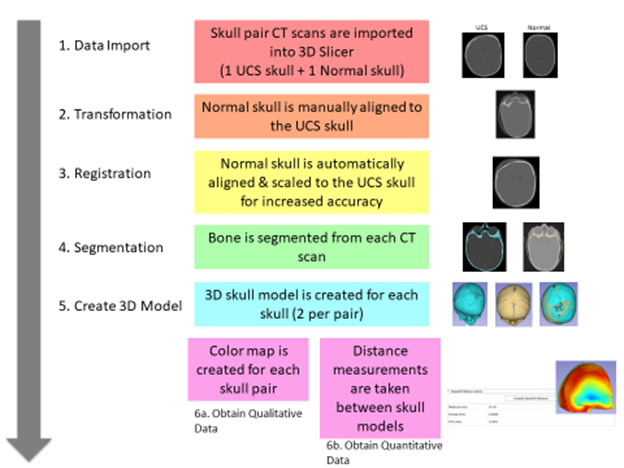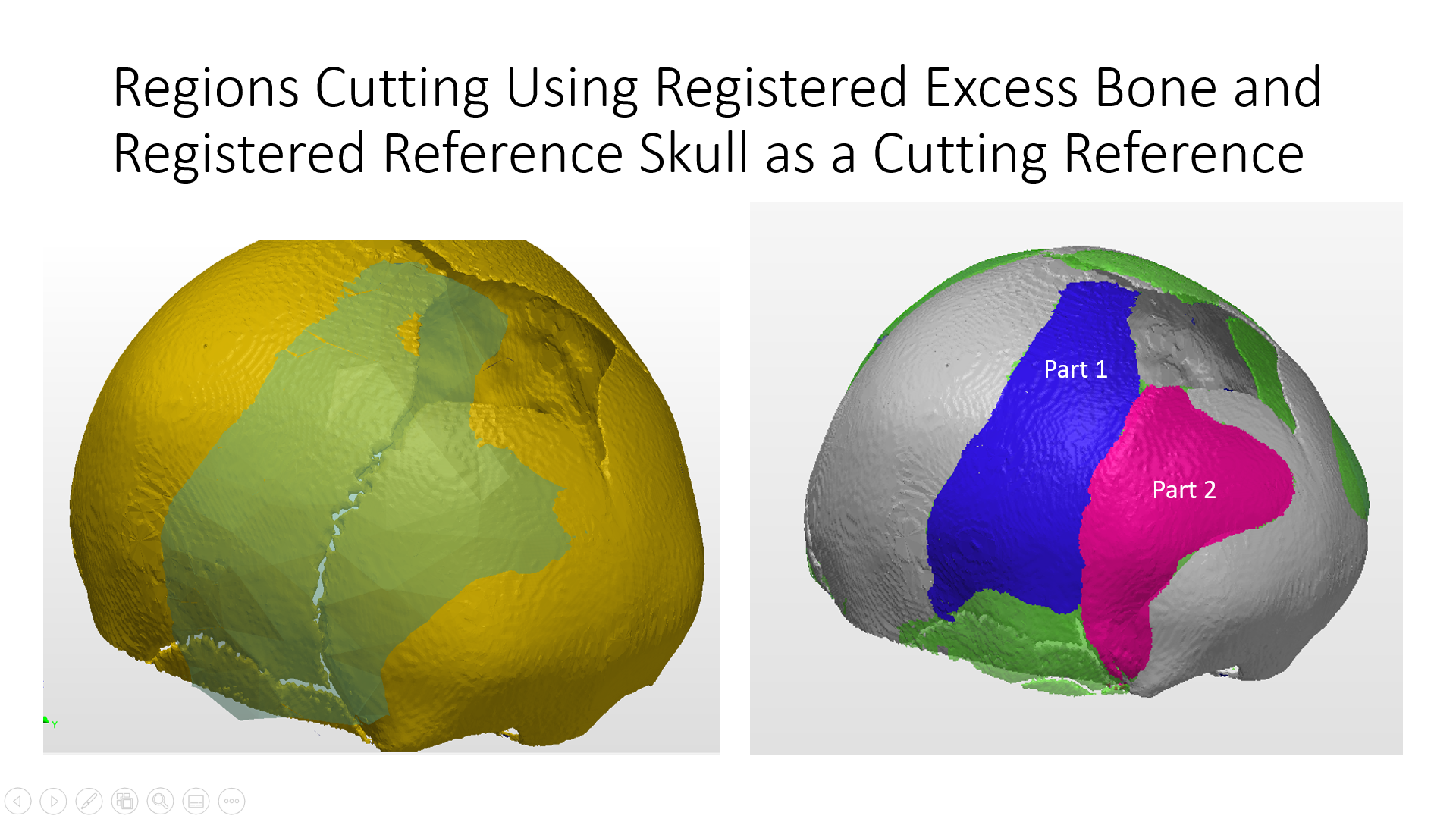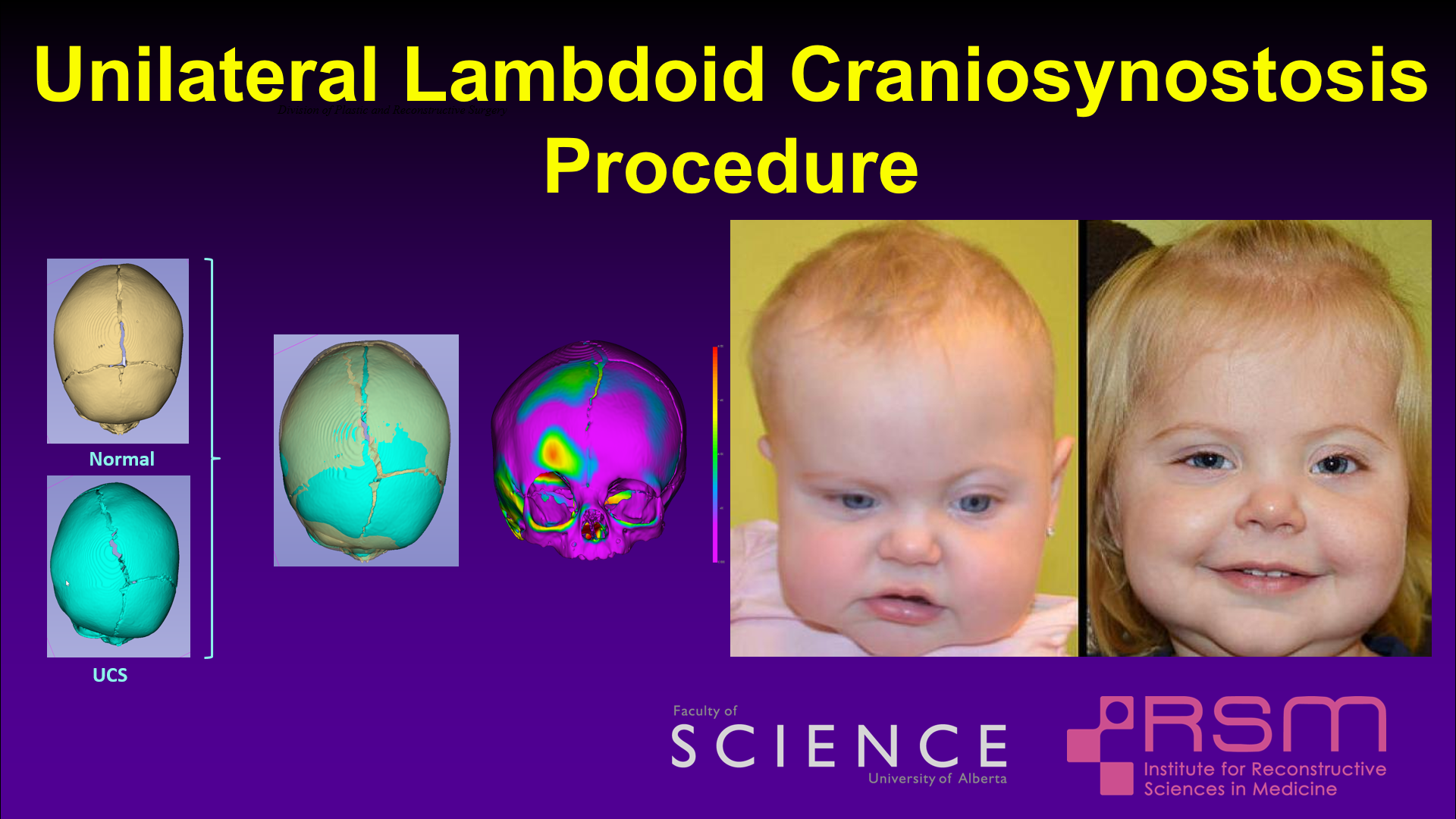Craniosynostosis is a condition that occurs in about one in 1000 infants. Unicoronal craniosynostosis (UCS) is a common subtype of craniosynostosis that results in an abnormal head shape, and can lead to brain growth impairment, visual problems, and psychosocial disturbance. Surgery is the mainstay of treatment for UCS, and involves removing the abnormal skull bones and reshaping them. Cranial vault remodeling (CVR) is an invasive and often lengthy procedure that can result in significant blood loss. Virtual surgical planning (VSP) is becoming popular as a method to reduce the length of these procedures and improve outcomes for patients. There is limited data comparing conventionally planned and virtually planned CVR surgeries. The lack of a reliable, easy to use, and objective method to measure the deformity in UCS may contribute to this paucity.
The goal of the research presented in this project is to improve surgical planning for UCS by developing a deformity index measure, investigating perceptions of the deformity in UCS, and developing a virtual surgical procedure that could be used to develop an automated VSP algorithm for CVR in UCS.



